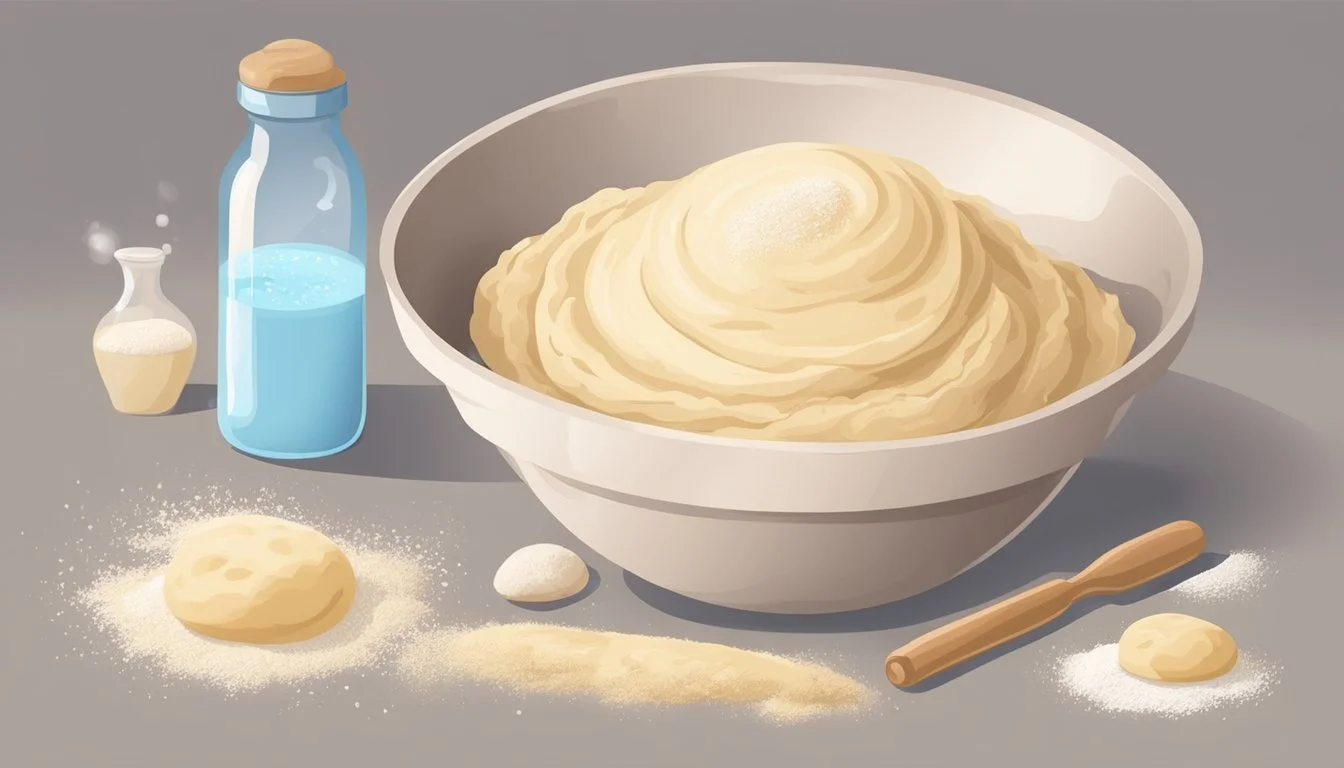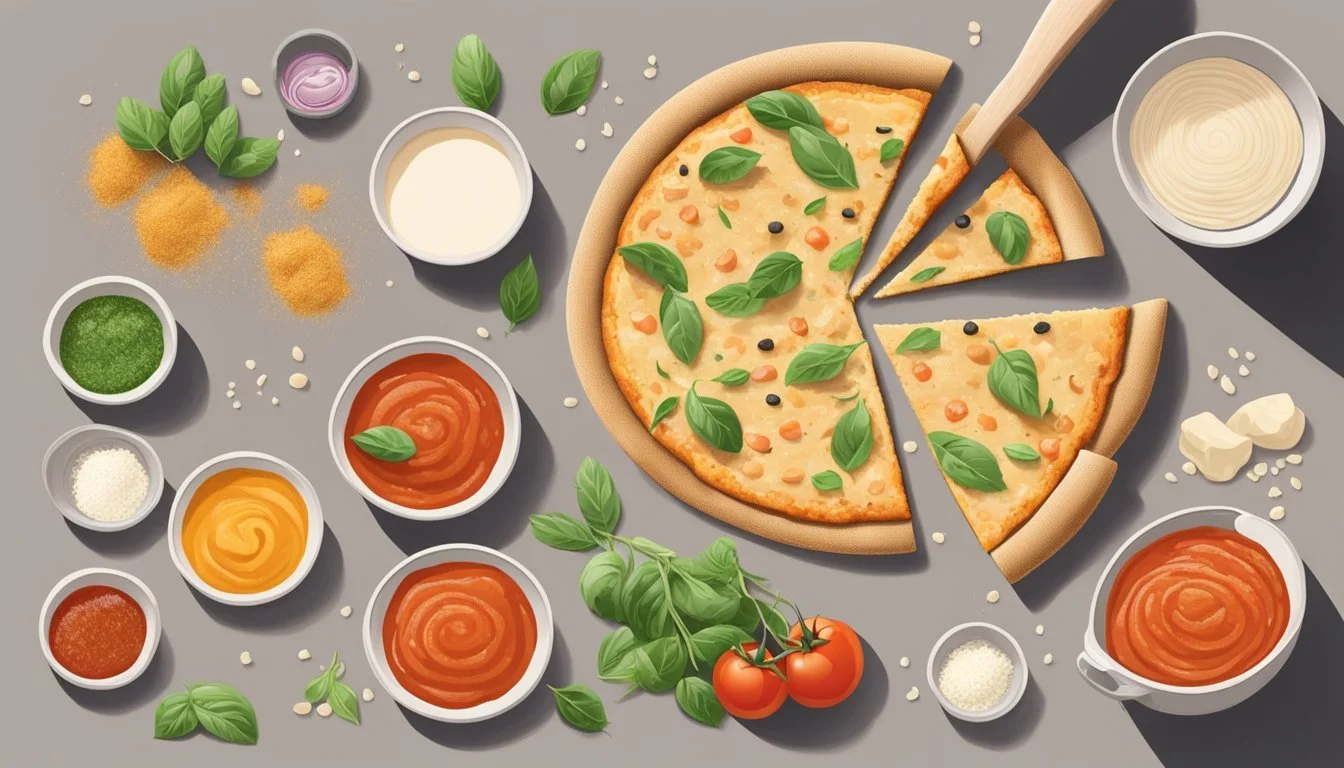Quinoa Pizza Crust Recipe
A Healthy Twist on Classic Comfort Food
Discover > Healthy Living Through Food > Quinoa Pizza Crust: A Healthy Twist on Classic Comfort Food
Welcome to a flavorful journey where health meets indulgence – the Quinoa (What wine goes well with quinoa?) Pizza (What wine goes well with pizza?) Crust. This innovative twist on classic comfort food introduces a nutritious alternative to traditional pizza dough, addressing the needs of gluten-free and vegan diets. Crafted from cooked quinoa (how long does cooked quinoa last?), this crust not only packs a punch with high protein and fiber content but also banishes the worry of a soggy crust that often accompanies gluten-free options.
Quinoa pizza crust presents an innovative twist on a classic favorite, offering a gluten-free alternative to traditional wheat-based crusts. This alternative adheres to the needs of those with gluten sensitivities while providing a nutritious foundation for a variety of toppings. Known for its health benefits, quinoa is a complete protein containing all nine essential amino acids, and it is high in fiber, vitamins, and minerals.
Picture this: a perfect canvas for your pizza creativity, achieved by spreading the quinoa mixture onto a sheet with parchment paper. This unique method ensures a satisfying crunch and sets the stage for your favorite toppings like tomato sauce and parmesan cheese.
Whether you're a fan of classic combinations or eager to explore gourmet choices, the Quinoa Crust Pizza redefines your pizza experience, proving that health-conscious choices can be as delightful as they are nutritious. Get ready to savor a healthier twist on classic comfort food that's sure to become a staple in your culinary repertoire.
Quinoa Pizza Crust Basics
Quinoa pizza crust presents a nutritious alternative to traditional pizza bases with its high protein and fiber content. It caters to gluten-free and vegan diets while offering a distinct, nutty flavor and a crunchy texture.
Benefits of Quinoa in Pizza Crust
Quinoa is a healthy substitute for conventional pizza crust ingredients, packed with protein, fiber, iron, potassium, and calcium. Protein is essential for muscle repair and growth, while fiber aids in digestion. Iron is vital for blood health, potassium regulates fluid balance, and calcium is necessary for bone strength. Quinoa crust is an excellent option for those looking for a nutritious gluten-free and vegan pizza base.
Preparation of Quinoa Dough
To prepare quinoa dough, one must first rinse the quinoa to remove its natural coating, which can be bitter. Soaking the grains for at least 6 hours overnight in water helps to soften them. After soaking, the quinoa is blended with water until a smooth batter forms, which will serve as the dough. This mixture can be then seasoned with salt, herbs, and spices according to taste preferences.
Baking Techniques for Quinoa Pizza Crust
When baking a quinoa pizza crust, preheating the oven to a high temperature is crucial for achieving a crispy texture. The dough should be spread evenly on a parchment paper-lined baking sheet to prevent sticking. The crust typically requires baking for a set amount of time until it becomes golden and firm to the touch before adding toppings and returning them to the oven. Accurate baking times and temperatures vary, so monitoring throughout the cooking process is advised.
Creating Your Pizza Dough
Creating a quinoa pizza dough involves a simple process of soaking grains, blending them into a batter, and then transforming that batter into a pizza dough ready for toppings.
Soaking and Rinsing Quinoa
To begin, one must soak one cup of uncooked quinoa in water for at least 6 to 8 hours. This step is crucial to soften the grains and improve their digestibility. After soaking, drain the quinoa using a fine-mesh strainer and rinse thoroughly to remove any remaining saponins, which can impart a bitter taste.
Soak 1 cup of uncooked quinoa in water: for 6-8 hours
Rinse thoroughly after soaking.
From Batter to Dough
Once rinsed, transfer the quinoa to a food processor. Add 1/4 cup of water and 1 teaspoon of baking powder |(how long does baking powder last?). Blend the mixture until a smooth batter forms. This batter is the base of your pizza dough and should have a thick consistency similar to that of a traditional wheat flour (how long does flour last?) dough.
Blend soaked and rinsed quinoa with:
1/4 cup water
1 teaspoon baking powder
Shaping and Pre-baking the Crust
Transfer the batter onto a pizza tray lined with parchment paper. Using a spatula, spread the batter evenly, shaping it into a desired pizza base size. Pre-bake the crust in an oven preheated to 425°F (220°C) for 15 minutes or until the edges are golden brown and crispy. This will form a sturdy base for toppings to be added later.
Spread batter on parchment paper into a round shape.
Pre-bake at 425°F (220°C) for 15 minutes.
Toppings and Flavor Enhancements
Choosing the right toppings and flavor enhancements can elevate a quinoa pizza crust from simple to gourmet. The following subsections offer guidance on selecting ingredients that complement the nutty flavor of quinoa.
Choosing the Right Toppings
For a balanced pizza, one should consider a mix of vegetables, proteins, and cheeses. The unique, earthy flavor of the quinoa crust pairs well with a variety of toppings:
Vegetables: Spinach, mushrooms, and tomatoes offer freshness and texture.
Proteins: Grilled chicken, pepperoni, or a vegan substitute can add heartiness.
Cheeses: Traditional mozzarella, sharp cheddar, or vegan cheese melts beautifully over the toppings.
Sauces and Cheeses
The sauce lays the foundation for the pizza's flavor profile. Tomato pizza sauce, infused with garlic and oregano, is a classic choice, but one can also consider alternatives:
Pesto: A basil and olive oil-based sauce for a herby punch.
Olive oil: A simple drizzle can enhance the crust's flavor.
When it comes to cheese, options vary:
Mozzarella: Offers a creamy melt.
Vegan cheese: A dairy-free alternative that complements other flavors without overpowering them.
Herbs and Spices for Added Zest
Herbs and spices are essential for added depth:
Oregano: A robust herb, synonymous with pizza.
Garlic: Adds pungency and warmth.
Fresh basil: Brings a sweet, peppery flavor that brightens the overall taste.
Incorporating these ingredients thoughtfully ensures a flavorful and satisfying quinoa pizza experience.
Nutritional Profile and Dietary Considerations
Quinoa pizza crust offers a nutritious alternative to traditional pizza bases. It is particularly appealing for those seeking a gluten-free option that doesn't compromise on taste or texture.
Caloric and Macronutrient Breakdown
Quinoa crust is rich in protein and fiber which can lead to increased satiety. A typical serving size of quinoa pizza crust (roughly one large slice) contains:
Calories: 120-150 kcal
Carbohydrates: 20-25 g
Protein: 4-5 g
Fiber: 2-3 g
Fat: 2-3 g
The macronutrient balance in quinoa provides a steady source of energy without the rapid spike in blood sugar levels associated with traditional pizza crusts made from refined flours (how long does flour last?).
Sodium and Fat Content
When preparing quinoa pizza crust, the following should be noted regarding sodium and fat content:
Sodium: Around 200-300 mg per slice, which may vary based on added ingredients like kosher salt. (how long does kosher salt last?)
Fat: Primarily consists of unsaturated fat, but the value can increase if additional fats are used in preparation. Saturated fat is typically low in quinoa crusts.
It is essential to consider these values in the context of daily recommended limits, particularly for those monitoring sodium intake for health reasons.
Allergen Information and Alternatives
Quinoa pizza crust is naturally gluten-free, making it suitable for people with gluten sensitivities or celiac disease. However, it is important to ensure that quinoa and other ingredients are not cross-contaminated with gluten during processing.
Allergens: Quinoa is not commonly allergenic, yet those with severe food allergies should consult with a healthcare provider.
Alternatives: Nutritional facts may vary with substitutes. For a vegan recipe, ensure no animal products are used.
By taking into account the allergen information and alternatives, individuals with dietary restrictions can still enjoy a savory pizza experience.
Serving and Presentation
When presenting a quinoa pizza crust, achieving a golden brown finish and cutting it into appropriate serving sizes are crucial for both aesthetics and practicality. It's well-suited for both lunch and dinner settings.
Cutting and Serving
A freshly baked quinoa pizza crust, crispy, and golden brown, should rest for a few minutes in the cake pan before cutting. Employing a sharp chef’s knife or a pizza cutter, one should slice the crust into squares or wedges, depending on preference. For serving, a sturdy spatula is ideal for ensuring each piece maintains its shape and toppings. Suggested serving sizes vary, but typically one pizza can be divided into 8 pieces for a hearty portion suitable for lunch or dinner.
Pairings and Accompaniments
The rustic and nutty flavor of quinoa pizza crust pairs exceptionally well with classic Italian toppings. Here’s a recommended selection:
Cheese: Mozzarella, ricotta, or goat cheese for a creamy texture
Vegetables: Arugula, bell peppers, olives, and mushrooms for freshness
Proteins: Grilled chicken, pepperoni, or Italian sausage for heartiness
Sauces: Tomato basil, pesto, or a drizzle of balsamic glaze to enhance flavor
For a well-composed meal, consider complementary sides such as a crisp Caesar salad or roasted vegetables, completing the dining experience with an Italian flair.







